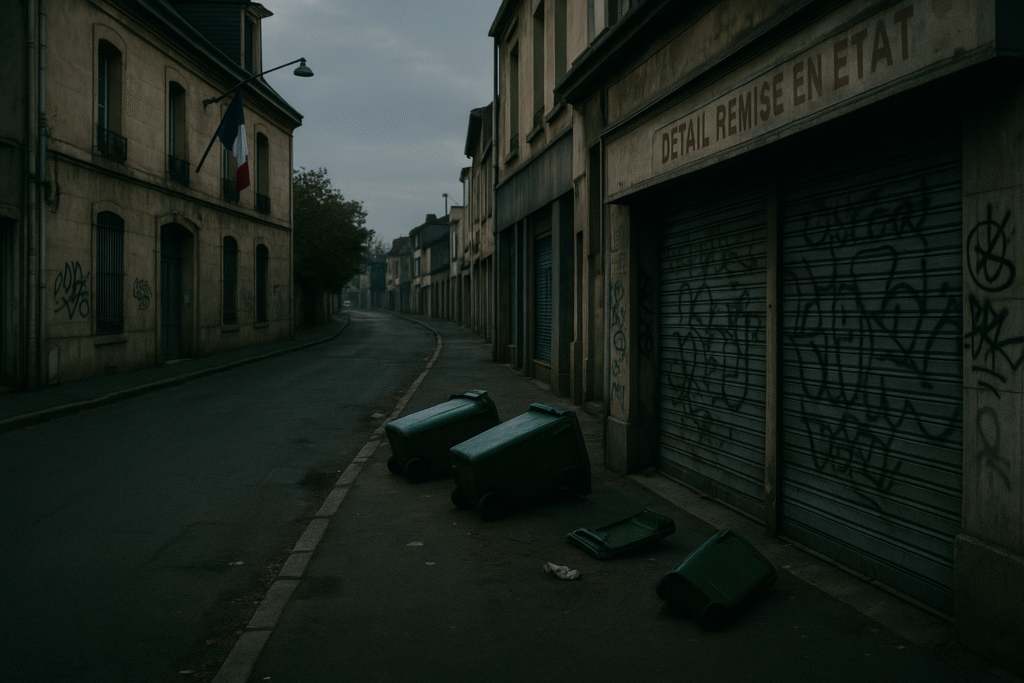The Flow That Fractures
Mass migration is no longer a symptom of war. It is a form of war. Russia’s weaponised migration strategy is not an anomaly of geopolitical fallout. Instead, it is a calibrated feature of hybrid statecraft. This series reveals how borders have become pressure valves in the modern battlespace—tested and ruptured not by ordnance, but by movement. What follows is not a humanitarian appeal. It is a forensic briefing. The issue is not empathy, but control.

1. War Without Impact Craters
To fragment a continent, you do not need tanks. You only need people—displaced, directed, and denied.
In conventional wars, physical terrain is seized. In hybrid warfare, legal, moral, and institutional terrain becomes the target. Russia’s strategic pressure on Europe now occurs without crossing borders. Instead, the pressure comes from behind them, using displacement as an indirect delivery mechanism for destabilisation.
It is critical to recognise that migration surges into Europe are no longer spontaneous episodes of humanitarian overflow. They increasingly reflect deliberate inflection points tied to Russian activity: Syria (2015), Libya (post-2011), Ukraine (2014 onward), and Belarus (2021). Each of these events coincided with significant military, diplomatic, or narrative operations executed by Russia or its proxies.
“The strategy is not to defeat a system in combat, but to make that system defeat itself by honouring its own laws faster than it can survive their consequences.”
– Timothy Snyder, The Road to Unfreedom (2018)
This weaponisation process operates subtly but decisively. When refugees arrive en masse, state systems are overwhelmed not only logistically, but ideologically. Liberal democracies, bound by human rights frameworks and asylum obligations, are compelled to process the influx, regardless of the origin conditions or intentions behind it. Consequently, these flows become vectors of political destabilisation. They strain administrative bandwidth, polarise electorates, and erode institutional trust.

2. Migration as Doctrine, Not Drift
“In hybrid warfare, migration is not fallout—it is a delivery system.”
– Aliyev, Weaponisation of Migration (2023)
Migration pressure is often misread as a policy failure or moral tragedy. However, under closer analysis, it emerges as a structured element of Russian strategic doctrine. Drawing from both Soviet political warfare principles and post-Cold War innovations, the Kremlin’s planners have institutionalised displacement as a tool, not a byproduct, of conflict.
Kelly Greenhill’s typology of engineered migration remains a key reference point. Her categorisation of coercive, dispossessive, exportive, and militarised displacement provides the vocabulary to describe Russia’s actions. For example, the mass ejection of populations in Eastern Ukraine fits a dispossessive model, whereas the Belarus-Poland border crisis exemplifies coercive migration engineered to extract strategic concessions.
What elevates this tactic from opportunism to doctrine is its alignment with the strategic philosophy of Unrestricted Warfare (Qiao Liang & Wang Xiangsui, 1999). This Chinese military text advocates for exploiting non-military domains—including migration—as valid theatres of war. Russian adaptations of this logic—visible in the Gerasimov Doctrine—have fused kinetic and non-kinetic methods into a seamless hybrid model. Under this paradigm, the refugee is not collateral; the refugee is the payload.

3. Ambiguity as Armour, Coercion by Constraint
Russia’s strategy relies not only on displacing people but also on ensuring that their movement collides with liberal legal structures. The principle of non-refoulement, central to international refugee law, becomes a constraint rather than a protection. In doing so, humanitarian law is transformed into strategic terrain.
Selin Başer’s 2022 study identifies this inversion with chilling clarity. Migration, she writes, becomes “the most insidious weapon of the changing world precisely because it does not look like one.” Unlike tanks or missiles, refugee flows activate legal obligations, not military responses. The defender’s hands are tied by their own charters.
The Belarus–EU border crisis serves as a model of this coercive architecture. The EU faced a binary: accept the migrants, risk domestic backlash, or reject them and violate core legal commitments. Either path created an internal fracture. The attacker did not need to breach borders. It simply forced the target to breach itself—morally, politically, or procedurally.
“Migration becomes a weapon precisely when law constrains retaliation.”
– Başer, The Most Insidious Weapon of the Changing World (2022)

4. The Belarus Template — A Prototype of Programmable Movement
In 2021, Belarus executed a live demonstration of what could be termed programmable migration. Under Russian strategists’ direction and likely coordination, Minsk issued expedited tourist visas to thousands of Middle Eastern migrants. These individuals were then transported toward EU borders with the promise of access, only to be stranded in freezing forests, engineered into a humanitarian crisis.
This operation was not improvisational. It revealed a multi-vector model:
- Narrative manipulation (media framed it as Western cruelty),
- Logistical facilitation (state airlines routed migrants toward conflict corridors),
- Diplomatic deniability (Belarus framed it as a spontaneous movement),
- Legal entrapment (Poland and Lithuania were forced into rights dilemmas).
The aim was not to breach European defences by force but to collapse policy cohesion under ambiguity saturation. Poland’s eventual securitised response led to internal EU debate, NGO condemnation, and media outcry—outcomes that functionally rewarded the initial operation.
“In hybrid war, ambiguity is not a by-product—it is the main weapon.”
— Marsh, Putin’s Playbook (2023)

5. Saturation as Strategy
Displacement is a cumulative pressure mechanism. Its goal is not to destroy in one blow, but to incrementally saturate the defender’s processing capacity. In RAND’s terminology, this is a form of strategic cognitive overload—a method of warfare that attacks the decision-making architecture itself.
Administrative agencies, asylum courts, humanitarian NGOs, and border patrol systems are designed for order. However, they default to crisis mode when confronted with sustained ambiguity, volume, and narrative pressure. Russia’s tactic leverages this response: perpetually keeping systems in a reactive posture ensures they never return to equilibrium.
This is not just about breaking borders. It is about collapsing political tempo, making states unable to define a threat, legislate a response, or communicate a strategy in time to maintain authority.

6. Cultural Security and the French Failure
France provides a powerful example of how prolonged saturation without narrative control leads to a cultural legitimacy crisis. While locally triggered, the riots of 2005, 2015, and 2023 stem from deeper failures to maintain symbolic coherence in the face of unmanaged demographic change.
According to Sakai and Chopin (2021), cultural security must be recognised as an extension of national security. It involves not only protecting populations but safeguarding the symbolic frameworks—language, law, ritual, and space—through which sovereignty is exercised.
The inability to articulate a coherent cultural doctrine left the state vulnerable to external framing in France. Russia capitalised on this weakness by using media outlets like RT and Sputnik to depict France as a failed multicultural state, thereby eroding its soft power within Europe and globally.
“Security must include the protection of symbolic continuity—not just the absence of threat.”
— Sakai & Chopin, Diversification of Security and Cultural Security (2021)

7. Series Overview — What Follows
This editorial serves as the doctrinal gateway to a ten-part forensic series. Each article will deconstruct a discrete mechanism of Russia’s weaponised migration strategy, showing not only how it works but also how it succeeds—by outpacing law, collapsing tempo, and exploiting narrative vulnerability.
The series includes:
- The Borderless Siege
- Migration as Doctrine, Not Drift
- Strategic Destabilisation and the Engineering of Outflow
- Displacement as a Strategic Delivery Mechanism
- Belarus 2021: Prototype of Programmable Movement
- Cognitive Operations: How RT Arabic Built a Corridor to Europe
- Bureaucratic Siege: How Migration Overload Dismantles State Capacity
- Temporal Warfare: Why Democracies Lose the War Before It Starts
- The Collapse of Political Distinction
- Narrative Sovereignty: How Europe Must Learn to Name What It Defends

Migration Ends When Doctrine Changes
Europe is not simply under strain. It is under siege—slowly, ambiguously, and methodically. Russia’s weaponised migration strategy is hybrid warfare by saturation, legal inversion, and narrative fog. It seeks not territorial conquest but epistemic exhaustion. It exploits the West’s highest values—law, openness, and humanitarianism—as pressure points.
To defend against this, Europe must relearn the logic of strategic naming. This series begins that process.
Read Strategically. Respond Intelligently.
If this article clarifies what you suspected — or reveals what institutions refuse to name — then the next step is strategic, not emotional. Frontline Europa exists to document the structural destabilisation of the continent through doctrine, not drama. We track pressure where others only see crisis.
Join our intelligence readership for full access to briefings, field reports, and high-fidelity analysis of the war already underway. Your awareness is your strongest line of defence.
→ Subscribe now. Receive forensic dispatches directly.
→ Support our work. Help build civilian strategic literacy.
References
- Greenhill, Kelly M. Weapons of Mass Migration. Cornell University Press, 2010.
- Başer, Selin. The Most Insidious Weapon of the Changing World: Migration, 2022.
- Marsh, Christopher. Putin’s Playbook, 2023.
- Qiao, Liang & Xiangsui, Wang. Unrestricted Warfare, 1999.
- Sakai, Kazunari & Chopin, Olivier. Diversification of Security and Cultural Security in Europe, 2021.
- RAND Corporation. Russian Disinformation on Social Media, 2022.
- Monaghan, Sean. Countering Hybrid Warfare, 2019.
- Pomerantsev, Peter. This Is Not Propaganda, 2019.
- Snyder, Timothy. The Road to Unfreedom, 2018.





